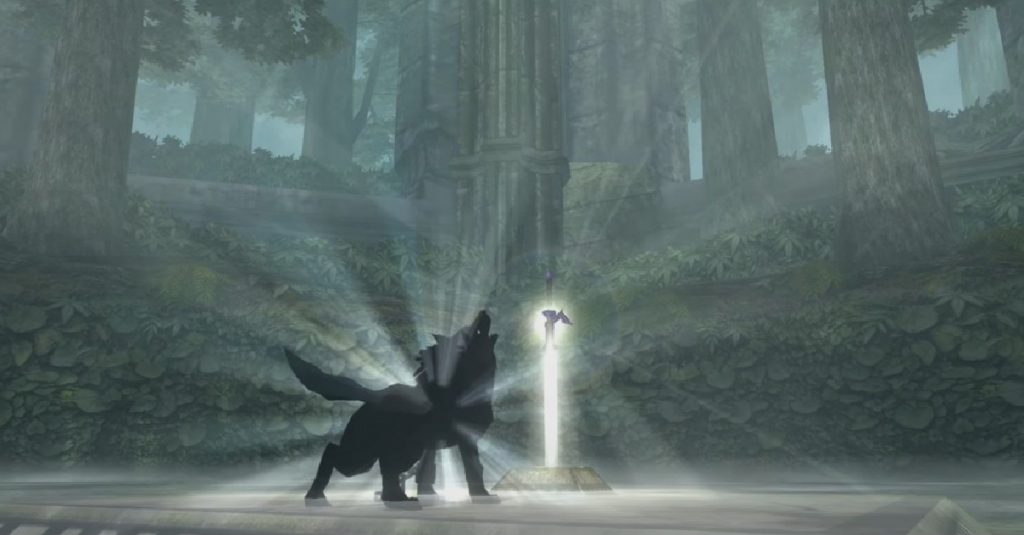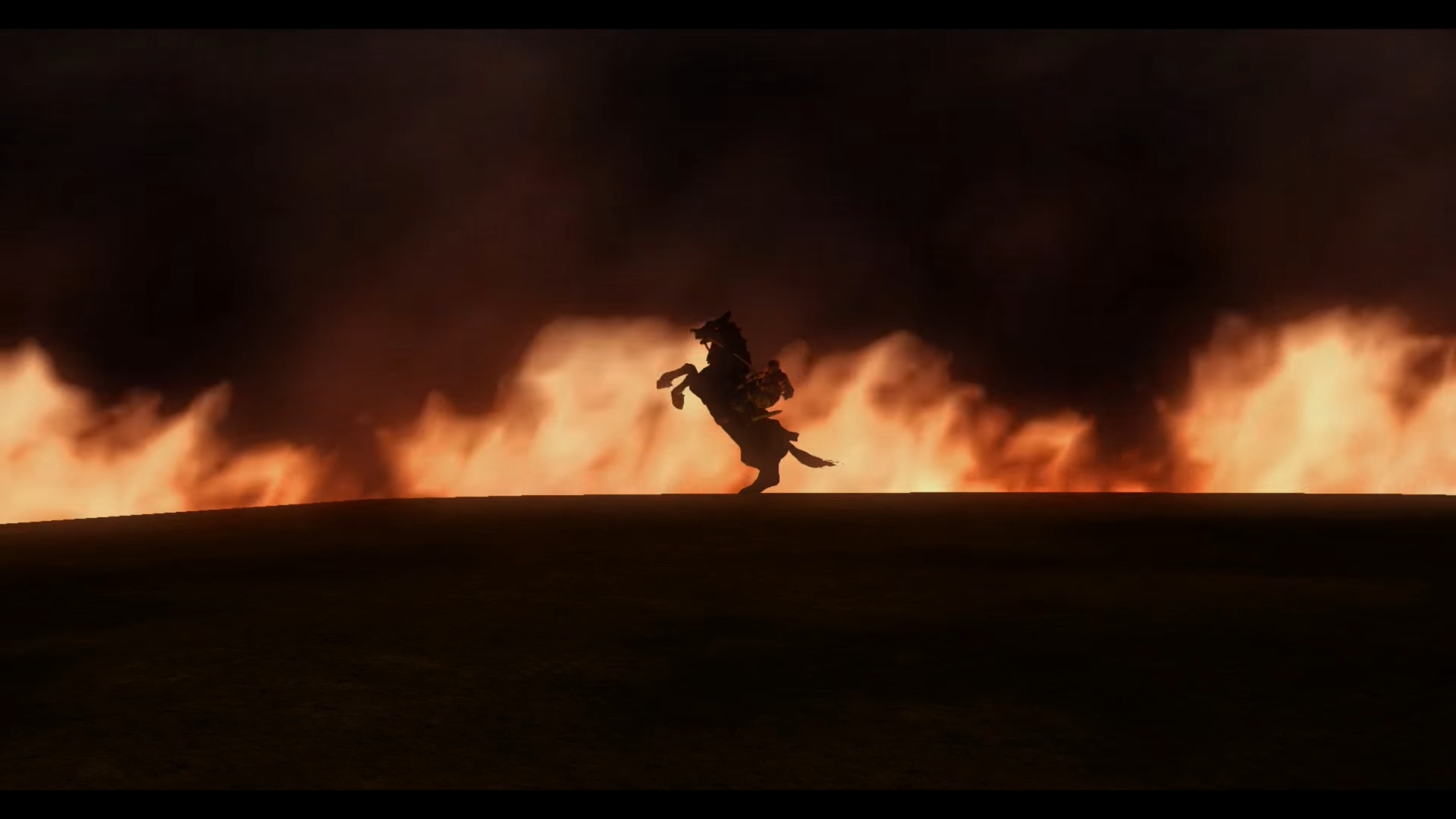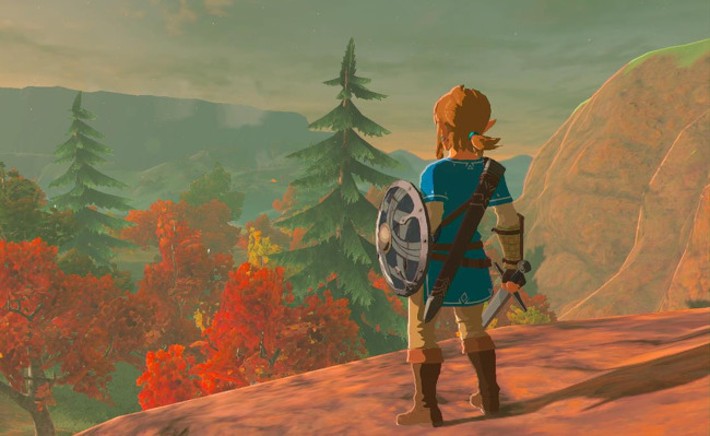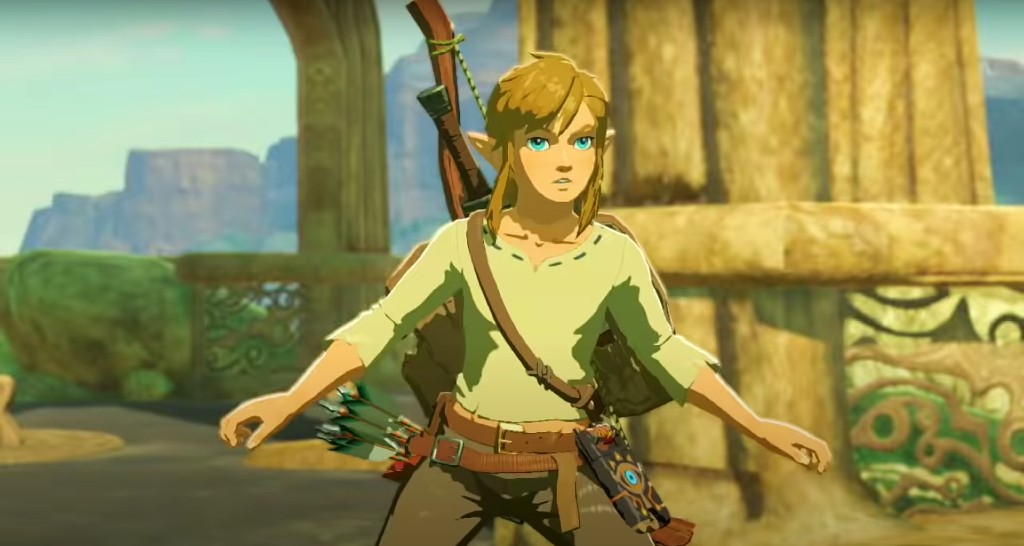
When The Legend of Zelda: Twilight Princess was released on November 19, 2006, it did so to applause nearly as thunderous and intense as the game itself. After a string of Legend of Zelda titles decidedly more cartoonish in nature, Twilight Princess represented a return to the darker side of the series — a side we hadn’t seen much of since Majora’s Mask. It was the first Zelda title to merit a ‘T’ rating (a pretty notable shift for the series) and earned it by simply being more macabre and somber in tone than any of its predecessors. The music was moodier, the art more frenetic, and the world more grim, and all in all, it made for a game that felt nearly suffocating.
However, in the midst of Twilight Princess‘ oppression was the comfort of familiarity. Despite trying to make the player feel a bit disconnected, the game itself was intricately tied to The Legend of Zelda series. It upheld the standard Legend of Zelda formula and duality we’d come to expect and maintained the titles’ emphasis on creating immersive environments and enticing dungeons riddled with secrets and ripe for repeat exploration. For as innovative as Twilight Princess felt in regards to its narrative, combat improvements, Shadow of the Colossus-esque tone, and overall world construction, it felt just as much as a celebration of the 20 years of history that came before it. All things considered, it was a pretty damn perfect game.

As of today, it’s been 15 years since The Legend of Zelda: Twilight Princess hit shelves and, subsequently, 15 years of it holding the title of greatest Legend of Zelda game of the century. And, as much as I loathe the term, I know this is irrefutably a pretty “hot take” that I would love to explain almost as much as I’d love the folks as excited for Breath of the Wild 2 as myself to simply hear me out… and perhaps even consider readjusting their expectations for the upcoming game.
While this whole conversation is admittedly subjective and all us Legend of Zelda fans have our own respective favorites — Skyward Sword, Link Between Worlds, and even Spirit Tracks certainly among them — I think the biggest point of contention with my statement has to be 2017’s Breath of the Wild, and believe me, I get it. While Twilight Princess was the highest-rated and best-selling modern Legend of Zelda game prior, it’s no secret that Breath of the Wild triumphed over it upon release. Much like Twilight Princess was with the Wii, Breath of the Wild was the launch title for the Nintendo Switch, making it a near compulsory purchase for day one console owners. However, it also had even more going for it.
Breath of the Wild was a revelation for the series that completely shifted The Legend of Zelda‘s trajectory. It was massive and minimalistic, with an open-world and open-ended gameplay. While the past few decades has seen a concentrated effort made towards advancing the games’ narrative prowess and retaining the series’ formula, Breath of the Wild showed little hesitation in shrugging that weight off and embracing the beauty found in simplicity. It shed the series’ complex score and increasingly heavy narrative, and embraced its core ideology of survival in every sense. However, in this purge towards innovation and perfection, I believe it lost valuable parts of the series’ identity as well, making Breath of the Wild a phenomenal game, but ultimately a lesser Legend of Zelda — something I hope Breath of the Wild 2 can fix.

While Breath of the Wild rests upon the foundation The Legend of Zelda laid down and uses several of the series’ pillars to hold itself up, this naturally makes some of its big omissions even more noticeable, with the most glaring of all of them being the game’s lack of any mechanic that facilitates the series’ near-signature sense of “duality.” In Twilight Princess, this is executed perfectly with the transformation between Hylian and Wolf Link, which allows players to pass between the real world and the corrupted Twilight Realm to interact with the world in more interesting ways. In Majora‘s Mask, this manifests through the masks, whereas Ocarina of Time relies upon time travel, and Link to the Past gives the players portals between the light and dark worlds. This feature simply doesn’t exist in Breath of the Wild, and while it’s not mandatory, it feels fundamental to the series and makes titles without it feel a bit less engaging — and it’s not the only thing the game is missing.
More frustrating than the lack of duality is Breath of the Wild‘s lack of true dungeons — overseen by treacherous beasts, filled with unusual tools and treasures, and filled with puzzles to solve. In lieu of temples and dungeons, you are presented with uninspired divine beasts and optional shrines that, while clever, ultimately begin to feel identical. And it hurts all the more to see these so fresh off of Twilight Princess. After all, in Twilight Princess you visit nine dungeons with vastly different designs, enemies, and fundamental mechanics. Spinning throughout the ancient Arbiter’s Grounds and taking on Stallord is one of the most memorable experiences in Zelda history, while the Lakebed temple is such a glorious homage to Ocarina’s water temple. You also visit Snowpeak Ruins, a vast estate run by a Goron trying to save his sickly wife, and the awe-inspiring Temple of Time. You don’t get moments like this in Breath of the Wild, and it’s honestly a bit heart-breaking.
Without both the sense of duality in previous games — and the engaging and diverse temples and tools — so much of your drive for exploration is reliant upon you intrinsically motivating yourself to progress through the game. Long gone are the almost pseudo-“Metroidvania” aspects of the series that beg us to visit and revisit areas and ask ourselves “what can I do now that I couldn’t before?” Simply put, you are shoved out into the wild, western RPG-inspired world rather than pulled into it. A remedy to this, of course, could be a strong narrative, and while Breath of the Wild has an abundance of charm and endearing characters, this is still an area that feels lacking.

With the exception of the game’s exposition (which is delivered to you by an old man later revealed to be the spirit of Princess Zelda’s father, King Rhoam), all of the narrative beats in Breath of the Wild are optional. While you’d be hard-pressed to complete the game without stumbling into some plot, it is possible to do so and even more possible to miss a significant amount of it. You see, outside of the events leading up to your infiltration of the divine beasts, the story is primarily unraveled through 13 memories you can find and view that are scattered across Breath of the Wild‘s Hyrule — and only one of them being mandatory for your completion of the game. While I don’t inherently think this is a bad design decision and even enjoy the idea of a narrative that is less spoon-fed, the game’s lack of narrative structure when coupled with the above qualities can make players who are less completion-oriented feel disinterested from this vast, beautiful world, and turns the once lush and living land of Hyrule into nothing more than a beautiful sandbox with but few toys to play with.
While impossible to ignore all Breath of the Wild did right as a game, these are the grievances I have with it as an entry in The Legend of Zelda series — all of them so easily remedied by a remembrance of what came before. I dream of a game where the 13 memories were portals to the past that allow you to live out Hyrule’s demise rather than that experience being a separate $60 Musou game, and where inspired temples, beasts, and tools return to the land of Hyrule. Previous Zelda games, such as Twilight Princess and, to an even larger extent, Majora’s Mask, prove that you can couple linearity with freedom in a beautiful and unalienating way, and that The Legend of Zelda is at its best when it does just that.
